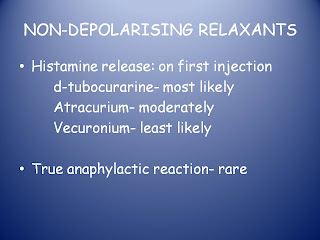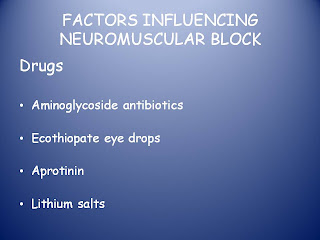Anesthesia awareness
By susheel yeshala ,16th jan 2012,
Before going into details of anesthesia awareness let us
have a look at following image which depicts the spectrum of consciousness.
These cognitive activities have been reported during administration of drugs
that are intended to induce and maintain general anesthesia.
Now getting in to the actual topic of anesthesia awareness, we will begin with the working definition.
Definition:
spontaneous postoperative recall of events occurring during general anesthesia.
Anesthesia awareness includes both explicit memory and
implicit memory. So what does these memories mean..
Explicit memory is information consciously
recollected by the patient.
Implicit memory is information that is not
associated with any conscious recollection.
Incidence:
recent studies indicate that for every 1000 patients receiving general
anesthesia 1 to 2
persons experience
awareness due to anesthesia.
Risk assessment
First of all, to understand the phenomenon of consciousness, or awareness during
general anesthesia, it is first necessary to understand the types of drugs used
during general anesthesia. Modern general anesthesia uses three separate
categories of drugs to provide the triad of general anesthesia.
- Sleep-inducing
drugs. Separate drugs are used to
keep people asleep and remove all memory of events occurring during the
operation. Lower concentrations of these drugs in the blood also suppress
breathing to some degree, and in larger concentrations they cause
breathing to stop altogether.
- Muscle
paralyzing drugs. These drugs paralyze all the
muscles of the body. They are necessary to prevent movements of body parts
&spasm of muscles due to pain
during surgery. Hence paralyzed person cannot move, cannot speak,
and cannot breathe(ventilator takes over the function of breathing). These
muscle paralyzing drugs do not cause paralysis of heart muscles, bladder
or bowel muscles, do not affect the functioning of the brain, which is why
a person can be paralyzed by these drugs but fully awake.
- Analgesics. Administered to remove the pain of operations. These
drugs administered at higher doses may cause the muscles of the body to
become stiff, always cause people to feel calm.
There are several
different experiences of awareness during anesthesia that are determined by the
effects of the drug combinations. These different drug combinations explain all
the horrific experiences, the partially conscious experiences, the fully
conscious experiences, as well as the sometimes even wondrous conscious
experiences of people under general anesthesia.
- The person was awake, able to move, but felt no pain. These people have adequate concentrations of painkilling drugs in their body, but insufficient muscle paralyzing or sleep-inducing drugs in their bodies.
- The person was awake, unable to move, but felt no pain. These people have adequate concentrations of painkilling and muscle paralyzing drugs in their bodies, but are awake because of insufficient concentrations of sleep-inducing drugs.
- The person was awake, able to move, and felt the pain of the operation. These people have inadequate concentrations of all three groups of drugs in their bodies.
- The person was
awake, felt the pain of the operation, but was unable to move, speak, or
do anything. This is due to inadequate
concentrations of sleep-inducing and painkilling drugs, but where the
person is still paralyzed by the muscle paralyzing drug. This is a
disaster, a situation which all anesthesiologists dread having happen with
their patients.
Anesthesia awareness
is not always due to improper drug administration. Other possible causes are
machine malfunction, use of cardiopulmonary bypass and finally errors in
knowledge, judgement, vigilance, or technical expertise.
CONSEQUENCES OF
AWARENESS
Anesthesia awareness
is commonly feared by both anaesthesiologist and patients. For the later,
possible adverse psychological sequelae include anxiety, sleep disorders, depression,
nightmares, panic attacks, post traumatic stress disorder(PTSD), long term
psychiatric disorders.
MANAGEMENT
What does an
anaesthesiologist do if he/she believes awareness due to anesthesia has
occurred? First, there must be honest, sincere, and full disclosure of what
happened. Second, patient should be reassured that repetition of awareness
during a future anesthetic is not inevitable or even a likely occurrence. Third,
it is essential to maintain contact with
patient through follow-up. Fourth, if necessary, referral for psychological
conseling or psychiatric care should be given.
PREVENTION
Direct monitoring of
brain wave activity has been proposed as a method of preventing anesthesia awareness. Considering this there
is use of electroencephalogram(EEG), bispectral index monitor(BIS), patient
state analyser(PSA).
Both BIS and PSA have
a high probability of correctly predicting both loss and recovery of
consciousness with general anesthesia.
The food and drug administration has approved both systems as clinical monitors
for anesthetic effects of brain but the question is, can they be used to prevent anesthesia awareness. They
have their own advantages and disadvantages.
Because is no monitor is universally accepted
as having the ability to detect , monitor, and eliminate awareness, measures to
prevent it becomes even more important. The following diagram shows possible
interventions required to prevent anesthesia awareness.
PREVENTION OF ANESTHESIA AWARENESS
CONCLUSION
Finally, because there
is no good explanation for the mechanism of its development, it is not possible
to identify patients at greater risk or to prevent all occurrences. Isolated
incidents will likely continue, despite good practice and adherence to accepted
monitoring standards.
































































